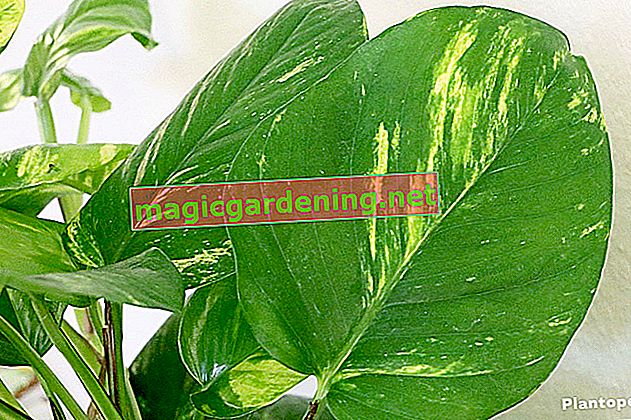
Philodendron doesn't always like to climb and window its leaves
Monstera and Philodendron are both assigned to the Araceae family and are therefore related to each other. Nevertheless, there are two different genera, as the plants differ significantly in their growth, among other things. We have summarized the most important features for you here:
- Monstera species are exclusively climbing plants
- Philodendron species thrive as climbing plants, shrubs and trees alike
- On the adult window leaf, the leaves are always deeply cut, often with additional holes
- Philodendron leaves are varied in shape, from egg to lanceolate, often with entire margins, rarely slit
also read
- Why does my Monstera have yellow leaves?
- Monstera blossom in portrait - useful information in a nutshell
- How should Monstera be watered correctly?
Some of the most popular philodendrons for indoor culture stand out with leathery leaves, the underside of which has a reddish shimmer. In contrast, the foliage on the window leaf is glossy green on both sides.
Flowers and fruits are only superficially similar
Where the two jungle plants feel at home, they surprise with their flowers at an advanced age. As is typical of the arum family, the cobs are surrounded by creamy white bracts. This is where the similarities end, because there are the following major differences:
- Window leaf flowers are hermaphroditic, with male and female flower parts
- Philodendron flowers are monoecious, with male and female flowers growing separately
- Window leaf flowers give off a subtle fragrance
- Philodendron blossoms smell of carrion to attract the right pollinators in the jungle
Manual pollination is therefore necessary for a philodendron to bear fruit as a houseplant after flowering. Although the piston-shaped fruits are visually similar, there is one important difference. The ripe fruit of a Monstera deliciosa is suitable for consumption, whereas the poisonous fruit of a Philodendron can cause significant nausea.
Monstera filters the water - Philodendron cleans the air you breathe
In addition to their magnificent appearance, both types of plants make themselves useful in indoor culture in different ways. The window leaf develops long aerial roots that absorb water and nutrients and act as adhesive organs. If these aerial roots tendril into an aquarium, they filter nitrate and nitrite from the water here, which the fish really like.
A philodendron is able to filter poisonous substances from the air through its mighty leaves. This is why the tree lover is also welcome in offices to absorb carbon monoxide, formaldehyde and benzene.
Tips
Regardless of their sometimes serious differences, monstera and philodendrons pull together in terms of location and care. Both types of plants love a partially shaded, warm place with high humidity. They prefer to be poured with lime-free water and regularly pampered with a gentle mist.








